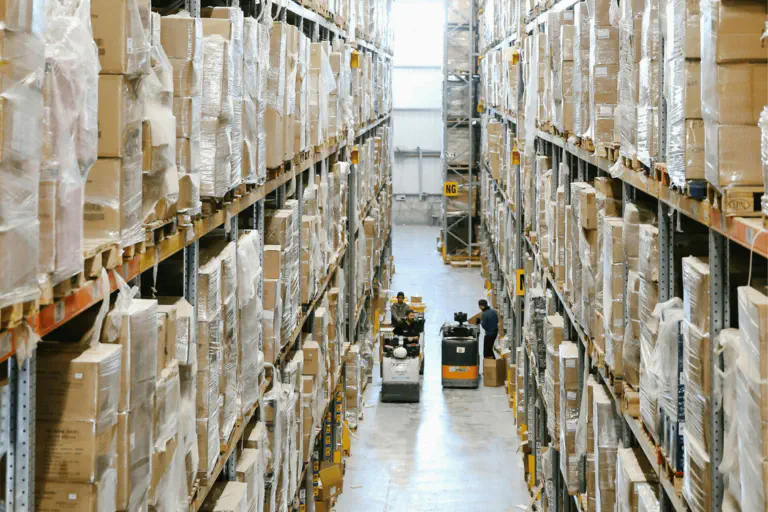Procurement management in companies #
Procurement in companies is a complex area of responsibility and places high demands on the responsible procurement managers. They have to weigh up the sometimes conflicting interests and requirements of internal stakeholders and organize supplier management. You are also responsible for ensuring that the required materials and services are available on time and within the available budget. Price negotiations, offer management, quality control and risk management are just a few of the central tasks of a procurement manager.
The good news is that digital solutions can help you optimize your procurement and set up transparent processes. Before we look at the potential for optimization in the procurement process, let’s first take a look at the biggest challenges in this area.
Why is efficient procurement important for your company? #
Procurement is far more than just a purchasing process - it is a central corporate function and directly contributes to value creation. An effective procurement process enables organizations to reduce costs, minimize risks and increase competitiveness. Strategic procurement is the key to the economic success of modern companies.
What are the goals of procurement? #
Procurement encompasses all activities and processes that are necessary to purchase goods, services and resources for a company. Essentially, the aim is to provide the required goods or services in the required quantity at the required time and place at an economically justifiable cost. In contrast to traditional purchasing, however, procurement goes beyond simple transactions. Procurement managers need to develop a robust procurement strategy, build and maintain supplier networks, keep an eye on costs and at the same time support the company’s strategic objectives. The procurement strategy also includes the question of whether and how sustainable procurement can be established. Modern procurement management includes, among other things
- Planning tasks (e.g. determining requirements and sourcing)
- Purchasing management and central procurement
- Organization of goods receipt and incoming goods inspection
- Management of warehouse logistics and materials management
- Internal supply chain management

Challenges in procurement #
Employees in procurement face complex challenges: Fluctuating markets, unstable global supply chains, rising cost pressures, price volatility and increasing regulations make an efficient procurement process more difficult. Companies need to develop flexible strategies to cope with these uncertainties and meet quality requirements at the same time. In fast-paced day-to-day business, even short-term material procurements must be implemented without major internal administrative hurdles - especially in times of just-in-time procurement. However, procurement within the company must not be organized so leanly that necessary quality controls are omitted or the urgent need for action leads to avoidable wrong decisions. The five key challenges are
Contract management A modern procurement process requires highly complex contract designs. Challenges include legal risks, precise definitions of performance and liability, negotiation difficulties and ensuring contract transparency and flexibility.
Risk management The identification and minimization of risks in procurement logistics is becoming increasingly complex. In particular, risks due to supply bottlenecks and geopolitical instability have increased in recent years and must always be taken into account when procuring and managing materials.
Supply chains Global supply chains are prone to disruption. Potential challenges include geographical distances, customs regulations, transportation risks and ensuring supply chain visibility and resilience. Added to this are changing regulatory requirements.
Supplier management The strategic management of supplier relationships requires comprehensive expertise and a close relationship with suppliers. The central challenges of procurement in the company are performance evaluation, developing strategic partnerships and ensuring supplier reliability.
Digitalization The digital transformation of procurement brings complex challenges as well as opportunities. Key issues are the integration of new technologies, transparent data management, cyber security and data protection and the qualification of employees for digital procurement processes.

What is the difference between purchasing and procurement? #
Material procurement, procurement process, purchasing management, procurement procedures in purchasing: Anyone who works in or deals with procurement will inevitably come across various terms and formulations that seem to be used synonymously at first glance. In fact, the distinction between procurement and purchasing is essential for understanding the complexity of procurement today.
While purchasing focuses on the immediate purchase of goods and services, procurement encompasses a more holistic approach with a long-term perspective. It includes strategic aspects such as supplier selection, contract management, risk assessment and long-term partnerships. Purchasing is therefore an operational sub-component of the procurement process. This is also referred to as strategic purchasing and operational purchasing.
Strategic purchasing #
Strategic purchasing or strategic procurement refers to the entire procurement management process. As already mentioned, the focus here is on long-term corporate goals. Employees in this area always keep an eye on the entire value chain in order to generate competitive advantages and minimize business risks. Procurement managers must be able to carry out market and competitive analyses, create supplier evaluations, develop and evaluate procurement strategies, maintain supplier relationships and decide which software is required, among other things. The supply chain is also an important aspect of strategic purchasing. You can find out more about this in our blog post on Supply Chain Management .
Operational purchasing #
Operational purchasing (also known as operational procurement), on the other hand, is specifically about procuring the required goods and services. This includes tasks such as requesting quotations, price comparisons, order processing and direct communication with suppliers. In contrast to procurement, purchasing can be organized centrally or decentrally. In both cases, employees in this area must focus on efficient execution, cost control and timely procurement of goods. Depending on the intended use, a distinction is made here between direct purchasing - the purchase of raw materials and components for the manufacture of products - and indirect purchasing - the purchase of resources required for the company’s operations.

Procurement options: What options do you have? #
As a procurement manager, you have various options for organizing your goods purchasing. In addition to the focus of your company, important decision criteria include financial planning, the stability of the supply chain and the reliability of your suppliers. In practice, a mix of different procurement options may also work best for you.
With individual procurement, you purchase goods by the piece, for example if there is a special customer order for them.
The aim of stock procurement is to keep a large quantity of goods and materials in stock in order to fulfill orders on an ongoing basis.
Just-in-time procurement, also known as production-synchronous procurement, involves procuring goods only when they are needed in the production process.
Success factors in procurement: What should you consider? #
Successful procurement processes require transparent communication, data-supported decisions and the continuous evaluation of supplier and product quality. Key factors include the use of digital technologies, risk management, requirements for sustainable procurement and the ability to react quickly to market changes.
Determining requirements Determining requirements is the first critical step in any procurement process. It includes the systematic analysis of the company’s needs, quantitative and qualitative requirements for goods and services and the definition of procurement targets. This allows those responsible for procurement to always keep an eye on what is currently needed.
Supplier selection Supplier selection requires a comprehensive evaluation of potential partners. Important criteria include quality, reliability, price structure, delivery capability, sustainability aspects and compatibility with the company’s strategic objectives.
Ordering and order confirmation This process step includes the formal communication of procurement requirements, requesting quotations and price comparisons, the precise definition of delivery conditions, quantities, prices and deadlines and finally the binding order confirmation by the supplier.
Incoming goods and goods inspection The incoming goods inspection checks that the delivered goods match the order. The decisive factors here are quantity control, quality inspection, documentation of deviations and, if necessary, a complaints process in the event of discrepancies.

Tips for optimizing your procurement processes #
The success of a company also depends on the individual departments working hand in hand. Accordingly, a faltering procurement process does not usually affect just one department, but can have a company-wide impact. In the worst case scenario, production comes to a standstill or has to be stopped altogether. It is therefore all the more important that all departments involved in procurement work together - purchasing, controlling, quality management and accounting. Based on the central success factors listed above, we have identified 5 approaches for optimizing your procurement:
Automation: Standardize your processes and use tools with automation functions, e.g. for order creation, invoice processing, to obtain quotes, send regular orders automatically and use your resources efficiently. The no-code platform SeaTable offers internal automation as well as the option of connecting payment service providers, for example, via an API .
Supplier management: Create a central supplier database accessible to all, in which the relevant information flows together, e.g. prices and available products, previous deliveries, quality analysis, reliability and performance evaluation, outstanding complaints, etc. You can then use this information to bundle orders in a targeted manner.
Inventory management: With effective inventory control, you can reduce storage costs, avoid duplicate orders and ensure the company’s ability to deliver. Use modern systems to optimize your procurement process through precise demand forecasts. With the supply chain management template of the no-code database solution SeaTable, you always have an overview of all stocks and outstanding deliveries.
Performance and quality checks: Establish systematic performance and quality measurements for suppliers. Define clear key figures, create dashboards and regularly monitor the performance of your suppliers. Use modern database solutions that provide statistics and dashboards to gain deeper insights into your data.
Digitization: The lack of digitization in procurement is one of the biggest problems in many companies. Use a modern no-code solution to map your entire procurement process tailored to your needs in one integrated system. Data-driven decision-making processes, real-time information, transparency and improved analyses are the key to efficient procurement.
Efficient procurement processes with SeaTable #
Through careful planning, efficient implementation and continuous optimization, companies can reduce procurement costs, improve supplier reliability and increase overall business efficiency.
Whether you manage operational purchasing or the entire procurement process in your company, careful planning and continuous evaluation and optimization of your processes can reduce costs, improve supplier selection and contribute to the company’s success. An overview of all suppliers, open and planned orders, the supply chain, costs and order status is essential for this. Depending on the size of the company, however, this can quickly become confusing. With the free templates from SeaTable, you always have an overview of all data and enable transparency for your stakeholders. This allows you to evaluate your supply chain and procurement at any time and make strategic decisions.
Register for free today with your e-mail address.
FAQ Procurement #
What is involved in the procurement process?
What is procurement logistics?
What is a procurement strategy?
What is primary demand, secondary demand and tertiary demand?
